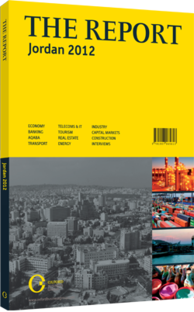Changing times: Government strategy and regulatory reform
At a time when parts of Jordan’s transport sector are struggling because of regional turmoil and the wider economic downturn, industry analysts say it is crucial to plan ahead and modernise the country’s legislative framework in preparation for better times. A number of such changes are under way, with the government working to reform outdated laws and implement strategies to support the sector’s growth.
INDUSTRY DEVELOPMENT: On the strategy side, the government is looking at short- and long-term development. In December 2011 the Ministry of Transport (MoT) launched its 2012-14 National Transport Strategy, following the previous 2009-11 plan.
The MoT also plans to undertake a study in 2012 to form the basis of a 20-year master strategy, according to the MoT’s planning and studies director, Naim Hassan. In March 2012, Hassan said the ministry was in the process of completing a tender for a consultancy to perform the study, which should take 18 months to complete. “The strategy will depend in part on the implementation of the National Railway Project.”
Another tender for a study for a national network of dry ports and logistics centres was set for April 2012. The study, which should take a year, will look at issues such as the best areas close to the country’s main industrial centres and the rail network to locate such centres. Industry figures regard such a plan as crucial.
“Currently there is no multi-modal network in Jordan,” said Soren Hansen, CEO of the Aqaba Container Terminal. “The only way out of Aqaba for containers is by truck.” However, even without building new forms of transport infrastructure, transport could be made more efficient, he said, by strengthening the coordination of logistics services. “There is an excess supply of logistics facilities within Jordan, but the country as a whole needs a consolidated logistics master plan,” he said.
LEGISLATING ROADWAYS: The Land Transport Regulatory Commission (LTRC) is also developing a strategy for the next three years, a key element of which will be the development of bus terminals throughout the kingdom. On the legislative and regulatory side, numerous changes are under way across the sector. In 2011 the government passed two major transport laws: a law on railway transport and one replacing a previous law on freight transport.
An amendment to the land transport law was due to be issued in April 2012. The amendment expands the types of services and facilities covered by the law, and responds to industry demands for rebalancing responsibilities and obligations in favour of the private sector, including limits to liabilities for freight forwarders.
RULING THE SEAS: The government is also working with the industry on a new maritime law. “The current law dates from 1972, before modern container shipping was even invented and when Jordan was still a newcomer to the industry,” said Captain Moha’d Dalabieh, former director of the port at Aqaba. He said now that Jordan is active in maritime bodies and a signatory on most major conventions, it is time to update its laws. Abdullah Jbour, executive manager of the Jordanian Logistics Association, said, “There is a need to clarify obligations between the various actors in the maritime sector; currently, there are constant disputes.” A draft of the law is expected before the end of 2012.
FLYING HIGH: In air transport, 2011 saw ongoing efforts to harmonise Jordan’s air regulations and legislation with EU requirements under the country’s Euro-Mediterranean Aviation Agreement with the bloc, signed in 2010. Jordan was the first country in the region to sign an agreement with the EU and the second country outside of Europe, after Morocco, under a programme to establish a Euro-Mediterranean Common Aviation Area. The agreement was provisionally implemented in December 2011, a year after its signature. Under the accord Jordan is gradually implementing an open skies policy with the EU on a reciprocal basis, while taking into account national economic interests and those of Jordanian carriers. The change is set to boost passenger numbers while also allowing improved access to European airports for the kingdom’s carriers.
You have reached the limit of premium articles you can view for free.
Choose from the options below to purchase print or digital editions of our Reports. You can also purchase a website subscription giving you unlimited access to all of our Reports online for 12 months.
If you have already purchased this Report or have a website subscription, please login to continue.

